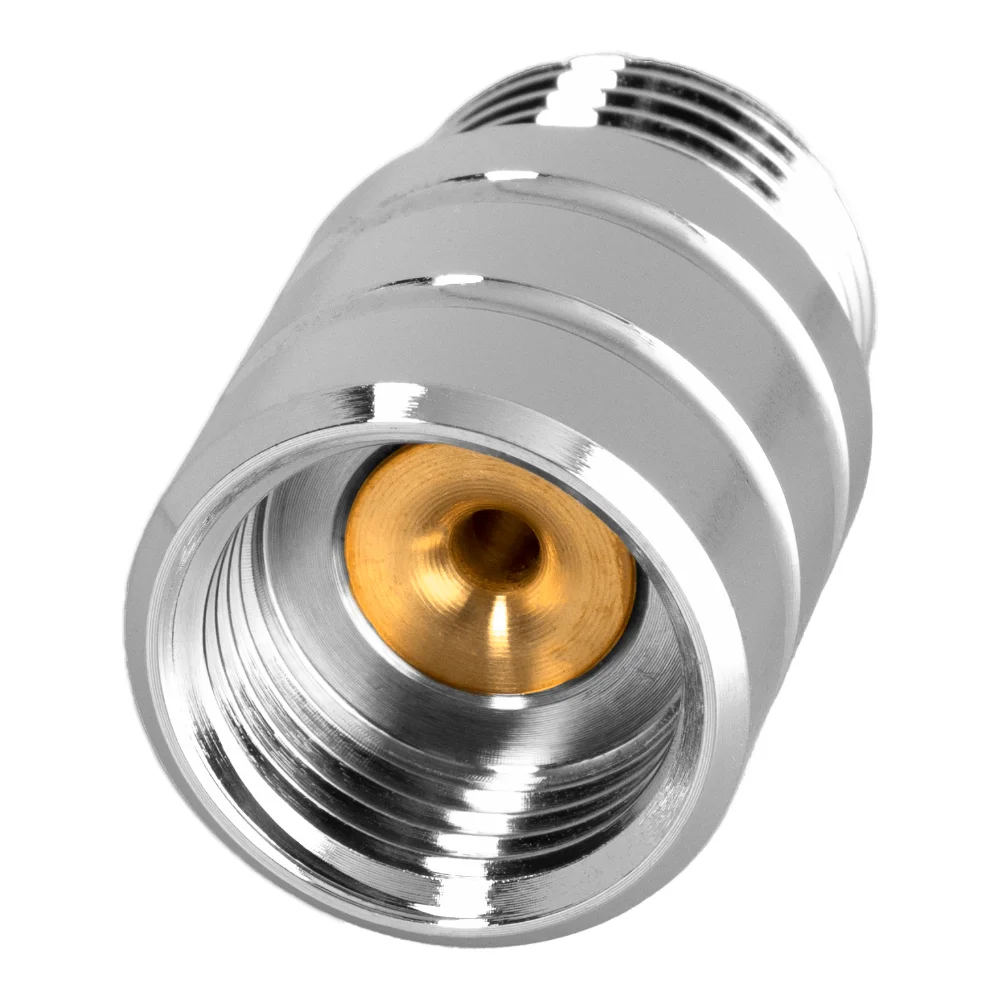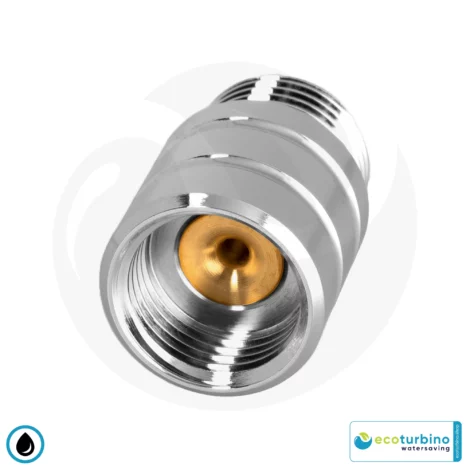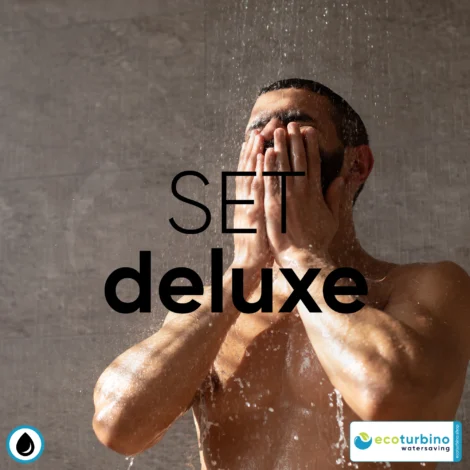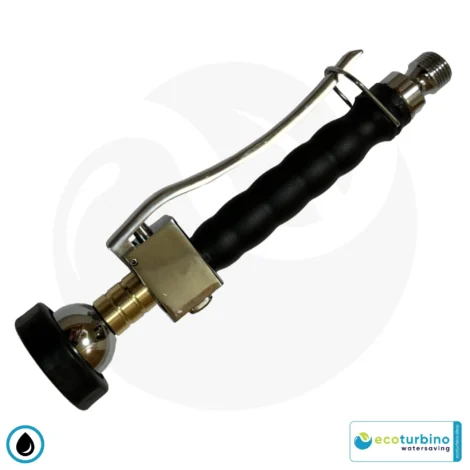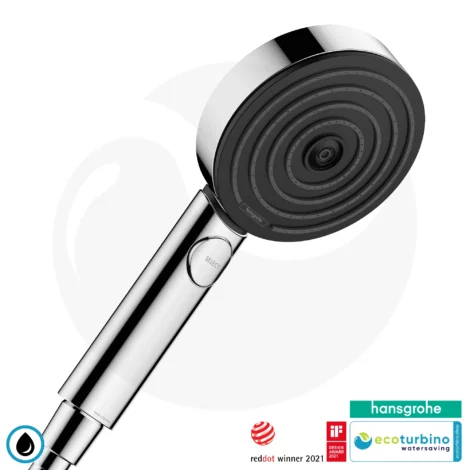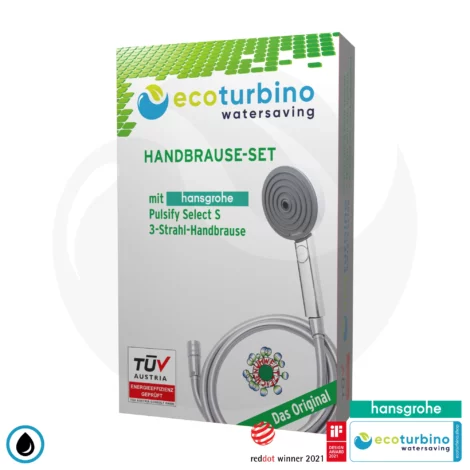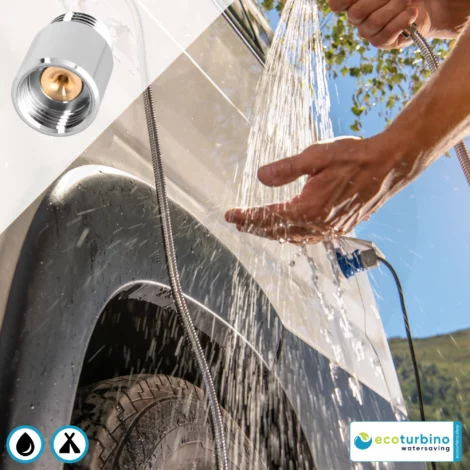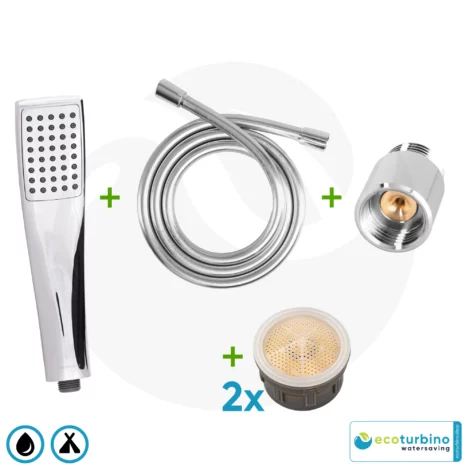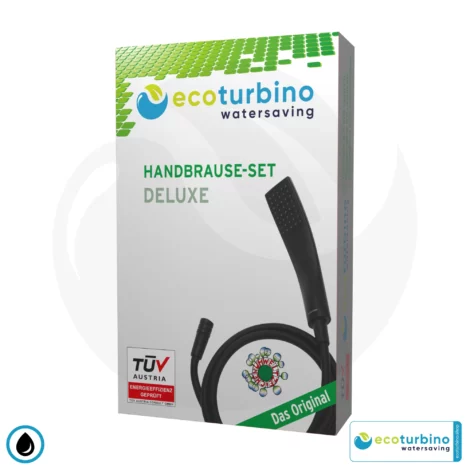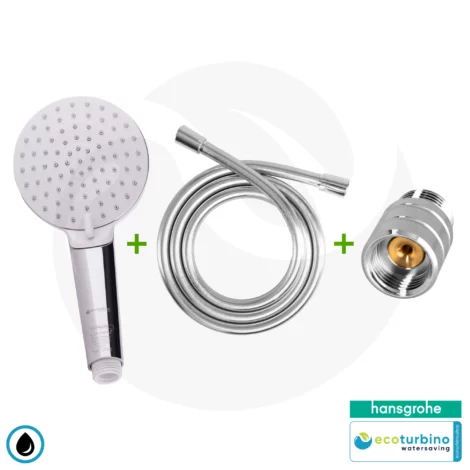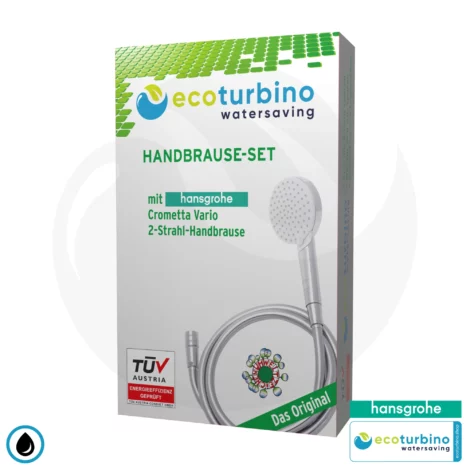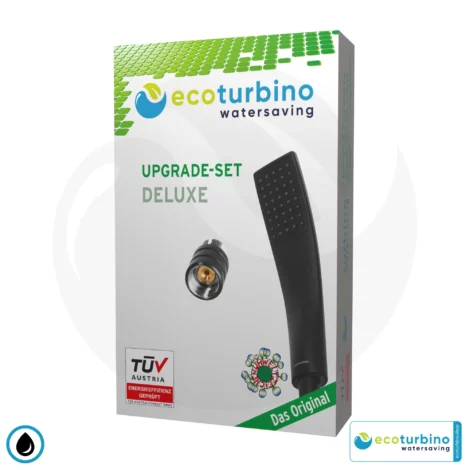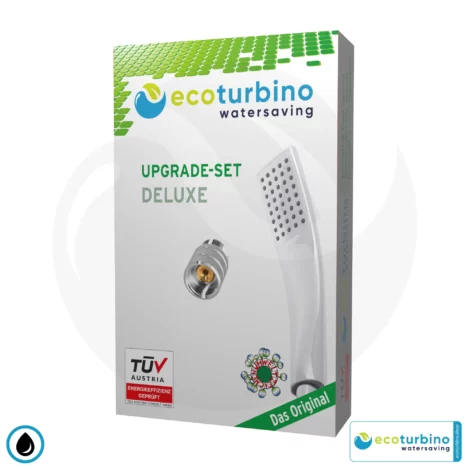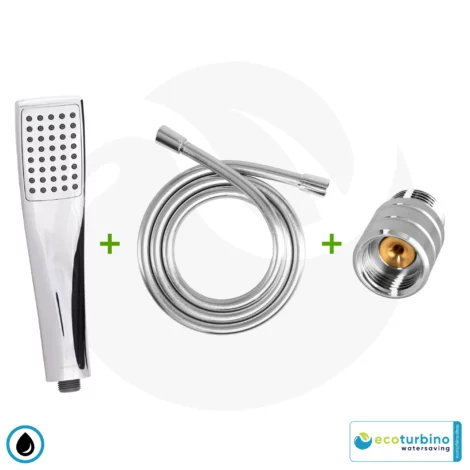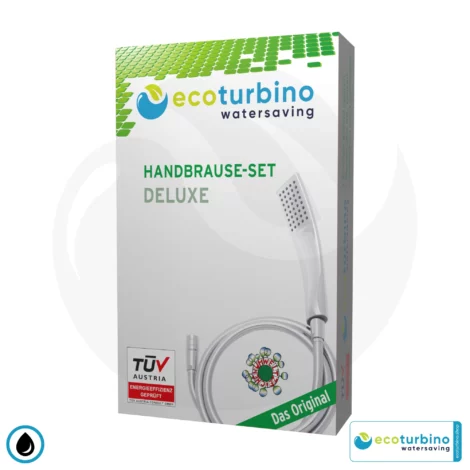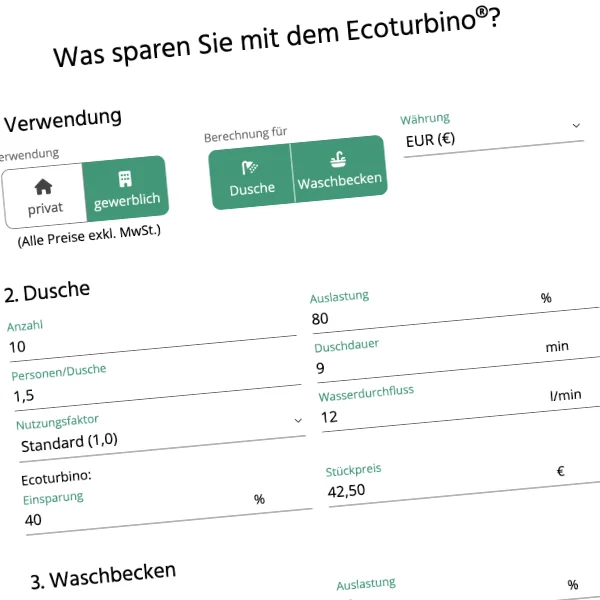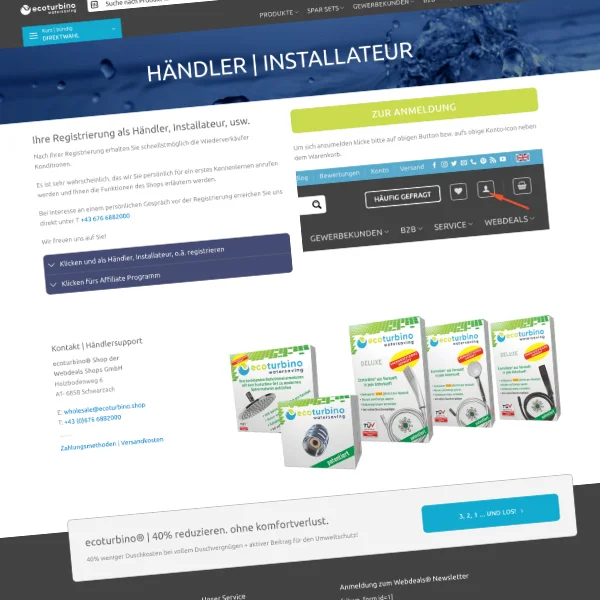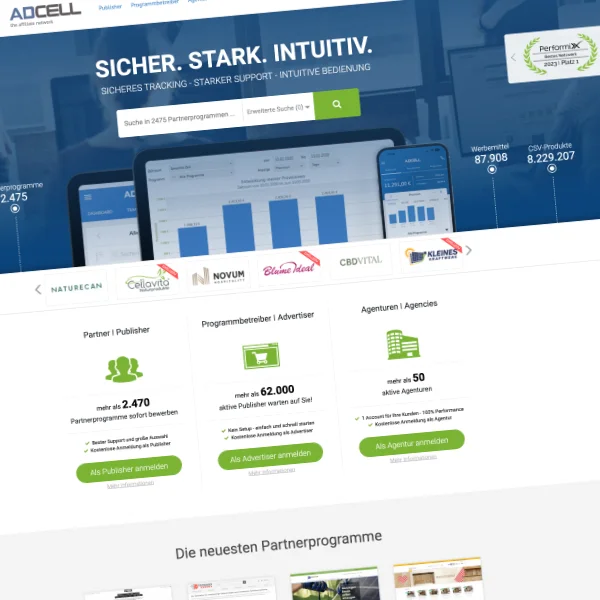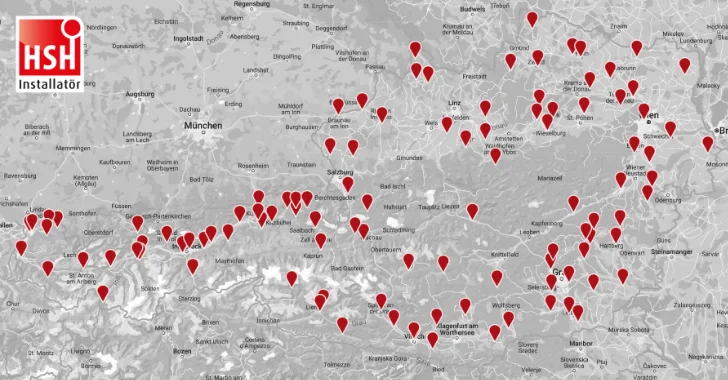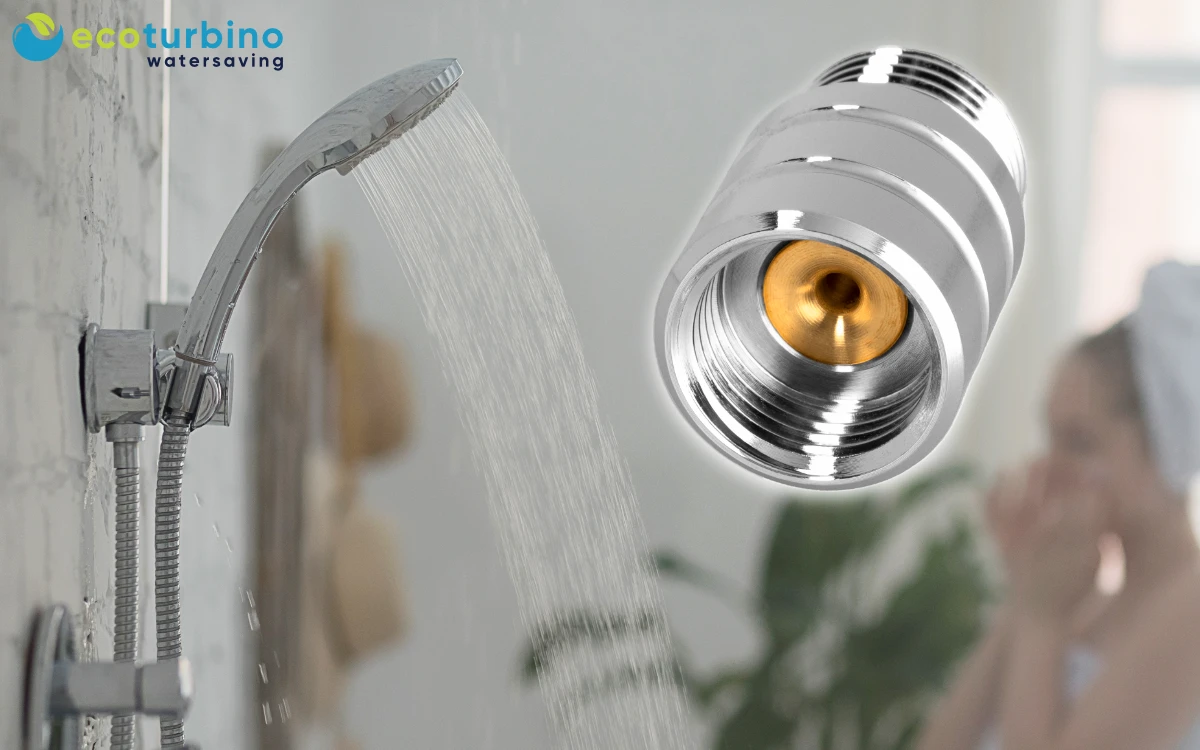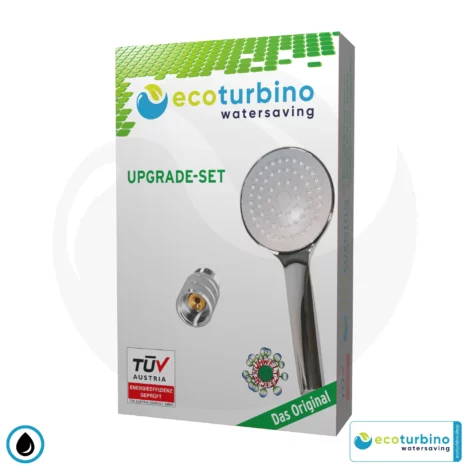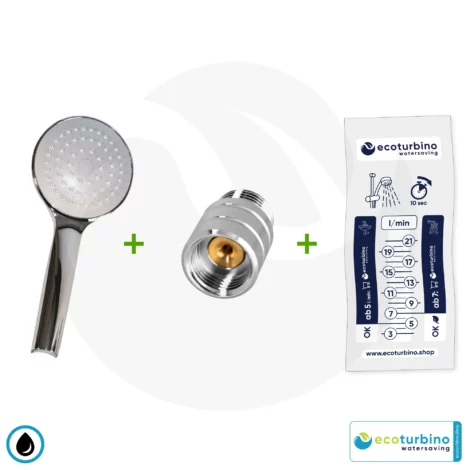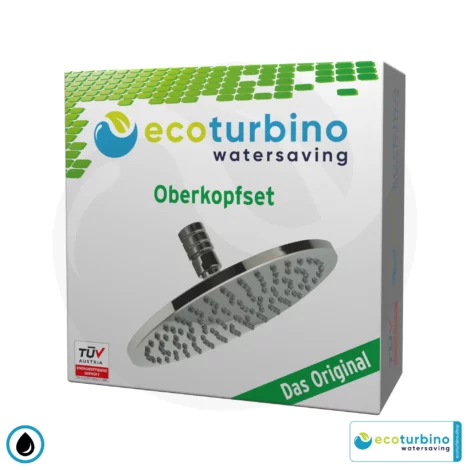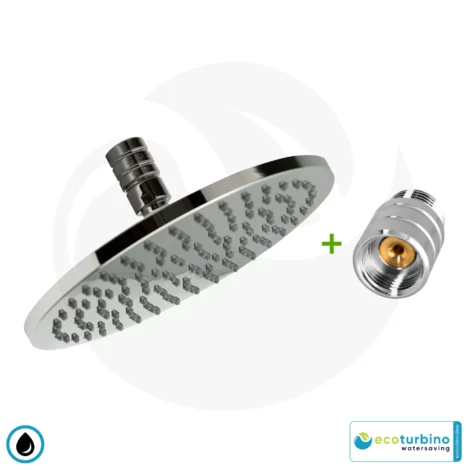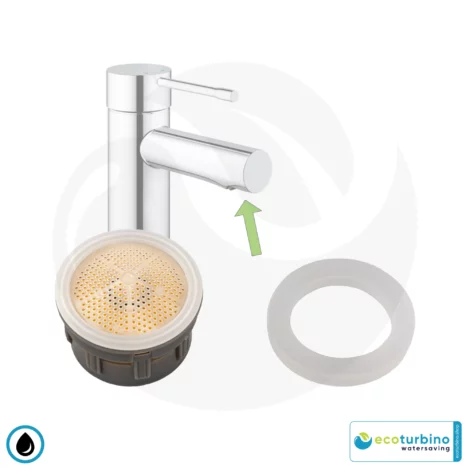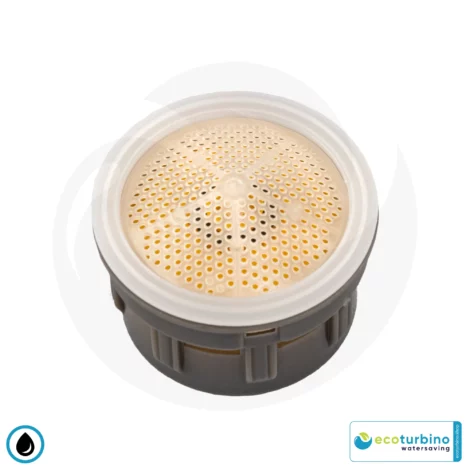Blog
Shower head and handheld shower with shower water saving function versus ecoturbino shower adapter with standard shower head | a comparison
Shower head & handheld shower with water-saving function use in the shower? | How much money can be saved by using a water-saving shower head – or rather an ecoturbino system?
Given the current high energy prices and increasing water and wastewater prices, showering at lower temperatures and for shorter durations offers significant potential for cost savings, affecting both energy consumption and the wallet.
But how significant is this saving potential really? And what are the benefits of the many water-saving shower heads? The range and versions of water-saving shower heads are endless in online shopping.
It’s true. Short, cold showers save energy and money! But what about comfort? For those who enjoy long, warm showers, considering a water-saving shower head or an alternative is advisable.
According to information from environmental consultations, the largest shares of energy consumption for the Austrian population are heating (50 percent), followed by car traffic (31 percent), and operation of electrical devices (11 percent). Heating water still accounts for about 8 percent of total energy consumption.
On average, a person in Europe consumes about 130-150 liters of drinking water daily, with a large portion used for bathing or showering, where the shower has now become the preferred choice.
Many apartments, for example, no longer have a bathtub. About half of the Austrian population showers daily, while about a quarter showers every two days.
Taking a full bath is more expensive than showering – or the infamous bathtub – but is that really true?
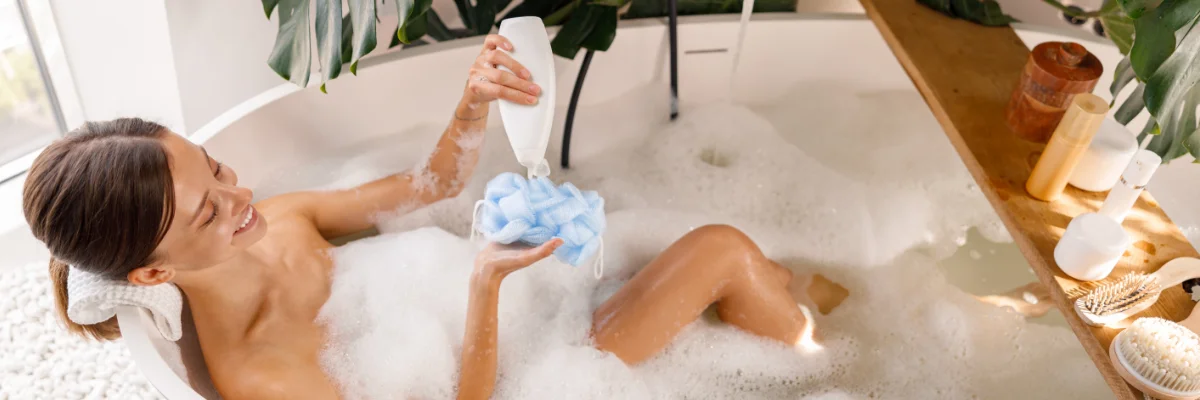
That’s probably a widely held belief. The higher cost of a full bath compared to a shower mainly results from the fact that showers typically last much shorter. This might be true if 1. the shower duration is short or 2. the showerhead is suitable.
The reality from our experience: The water and energy consumption for a single full bath is about 150-180 liters of water. However, this also corresponds to the consumption of a 10-12 minute shower with a shower head water flow rate of 12-15 liters/minute, which is not uncommon.
Conclusion: If you shower for 12 minutes with a water consumption of 12-15 liters per minute, the costs are the same. However, the difference with the bathtub is that the hot water runs down the drain without any body effect while lying in the bathtub, enjoying the relaxing wellness experience.
Therefore: As Tom Hanks once said in his role in the movie Forrest Gump, “Stupid is as stupid does.” In other words, taking a shower without a water-saving function is a really foolish thing to do.
Showerheads and water saving | Reducing water consumption – it ultimately comes down to water flow
The energy consumption during showering depends on three main factors: the duration of the shower, the flow rate of the water, and the water temperature.
Water-saving showerheads effectively regulate water consumption. Compared to conventional showerheads, which consume about 12 to 17 liters per minute (some even more), water-saving models already get by with about 7 to 10 liters or even less.
Important for tankless water heaters: Also, caution is advised with hydraulic tankless water heaters. Many of these devices only work above a certain flow rate. Therefore, it is advisable to find out before purchasing a water-saving showerhead what minimum flow rate is required.
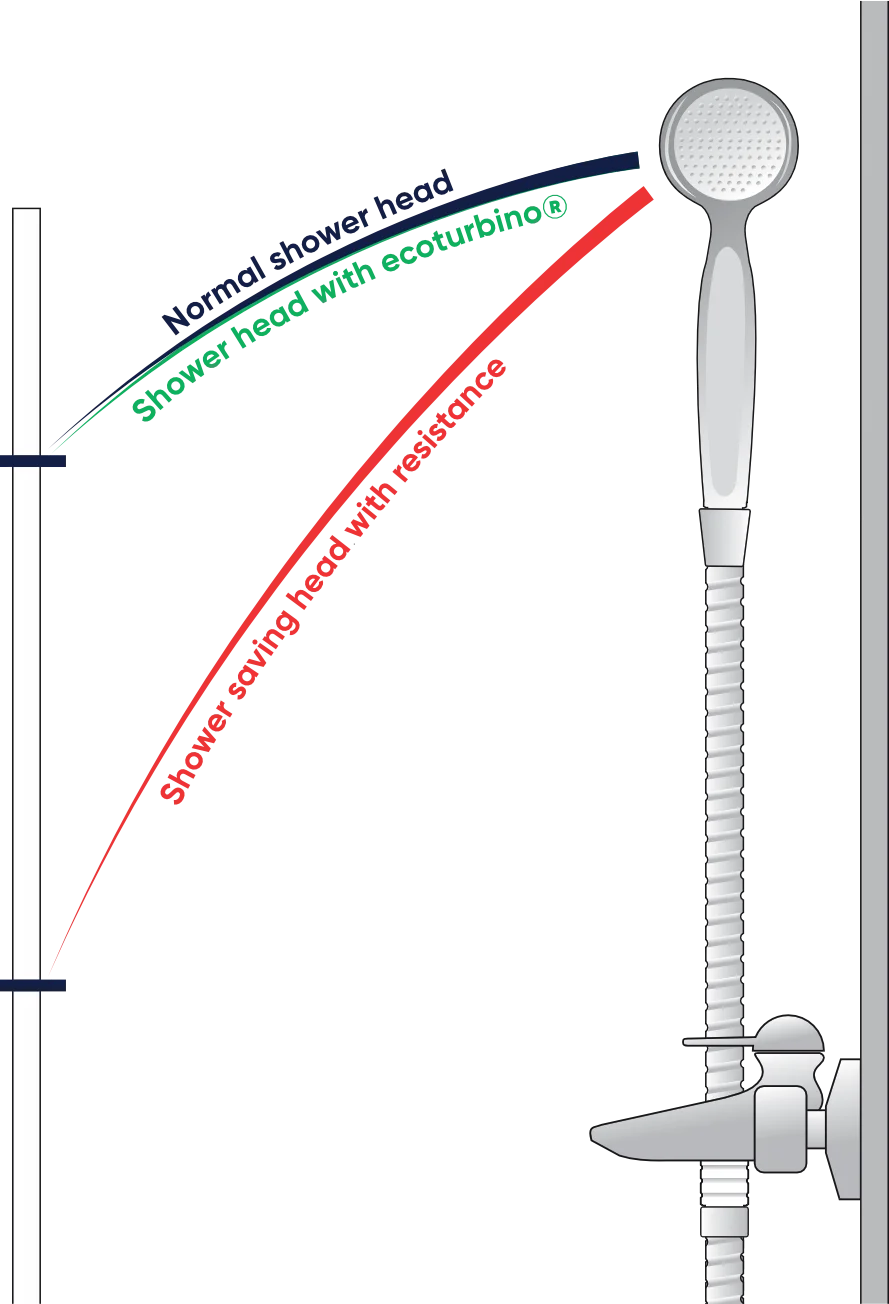
The energy savings with “saving showers” are always present, regardless of the type of water heating – Examples
For instance, during a 10-minute shower with a water temperature of 38 degrees Celsius, a standard showerhead (with a flow rate of 13 liters per minute) consumes about 1400 kilowatt-hours, according to the shower calculator of the German Consumer Association, when the water is heated with a gas floor heater.
With the current gas price of 16 cents per kilowatt-hour (based on the Wien Energie tariff), this results in energy costs of 0.55 euros per shower.
By using a water-saving showerhead (with a flow rate of 8 liters per minute), the energy consumption reduces to 6.5 kilowatt-hours, making a hot shower cost approximately 1.04 euros.
Assuming one showers daily, the cost for a water-saving showerhead would be recouped in a short time. Over the course of a year, with daily use, there is a potential saving of up to 110 euros per person.
Determine the water consumption of your shower: Weigh it or simply use our measuring bag
Using water-saving showerheads not only saves energy but also water and expensive wastewater.
With a savings of 50 liters per shower (18250 liters per year), at current water fees (2.35 euros per cubic meter) and wastewater fees (2.14 euros per cubic meter) in Vienna, savings of approximately 76 euros per person per year can already be achieved.
To determine the flow rate of your own showerhead, there is a simple method. 1 liter of water weighs exactly 1 kg.
You can either put the showerhead in a bucket, fully open it, and let it run for 30 seconds. Then weigh the amount of collected water and multiply the weight by 2 to get the water consumption per minute. If this value is over 12 liters, action is needed. Why?
- Energy: For a 10-minute shower, water consumption of 120 liters results in consumption of 1800 kilowatt-hours. By using a water-saving showerhead with a flow rate of 7 liters per minute, at least 37 cents in energy costs per shower can still be saved. This means a potential savings of at least 130 euros per year per person.
- Water costs: For a 10-minute shower, water consumption of 120 liters results in 0.281 euros. With a flow rate of 7 liters per minute, at least 8-9 cents can still be saved.
- Wastewater costs: For a 10-minute shower, wastewater consumption of 120 liters results in 0.26 euros. With a flow rate of 7 liters per minute, at least 7-8 cents can still be saved.
Summed up: The shower costs per 10-minute shower are 0.91 euros. With a water-saving showerhead, the costs per 10-minute shower are 0.63 euros.
Water-saving showerheads or shower saving systems – how do they work essentially? Important knowledge!
Caution with tankless water heaters: Also, caution is advised with hydraulic tankless water heaters. Many of these devices only work above a certain flow rate. Therefore, it is advisable to find out before purchasing a water-saving showerhead what minimum flow rate is required.
The functioning of water-saving showerheads can occur in various ways:
- The simplest and cheapest method is to reduce the flow rate by using a resistance insert in the hose or before the showerhead. The problem with this: While it works well, the built-in resistance typically leads to a correspondingly lower water pressure when showering, which is not acceptable for most people.
- Another type of water-saving showerhead also reduces the flow rate by using thinner nozzles in the showerhead. By narrowing the nozzles, the water is accelerated in the thin stream, almost “needling” the skin. Many people find this very uncomfortable. Additionally, the nozzles need regular cleaning as they are prone to lime deposits. Moreover, hygiene becomes an issue. Standing water in the showerhead can lead to biofilm or even Legionella formation.
- A third method involves mixing water in the showerhead with air. Small air bubbles are trapped in the water stream, reducing water consumption. Again, this often leads to a very gentle shower stream, commonly referred to as a “rain shower.”
-
ecoturbino® ET10L Water-Saving Shower Adapter A fourth method is our ecoturbino method. By installing the ecoturbino adapter at the beginning of the shower hose, around 40-50% of small air bubbles are trapped in the water stream. This also results in a very gentle shower stream with a regular showerhead, often referred to as a “rain shower.”
Additionally, the ecoturbino adapter has a showerhead emptying function after each shower, ensuring the showerhead remains hygienically clean.
Note on hygiene: Standing water in the showerhead leads to quicker calcification and biofilm or even Legionella. The best solution is to avoid standing water in the showerhead.
Caution with labels claiming water-saving without further specifications
Beware of the temptation of cheap products with apparent top performance. It is important not to be swayed by labels like “water-saving” without further details. In total, water-saving showerheads can save between 40 and 50 percent of water consumption without changing the shower duration.
However, when making a purchase, it is important to ensure that the flow rate in liters per minute is specified for the product. Meaningless designations like “eco,” “economical,” or “saves up to 50 percent water” are largely marketing or sales promotion statements and do not provide precise information about the actual savings.
